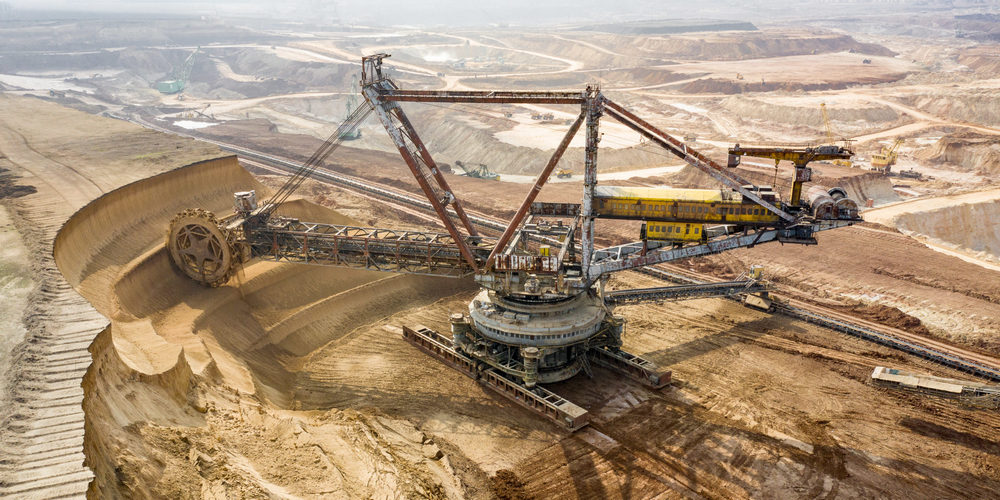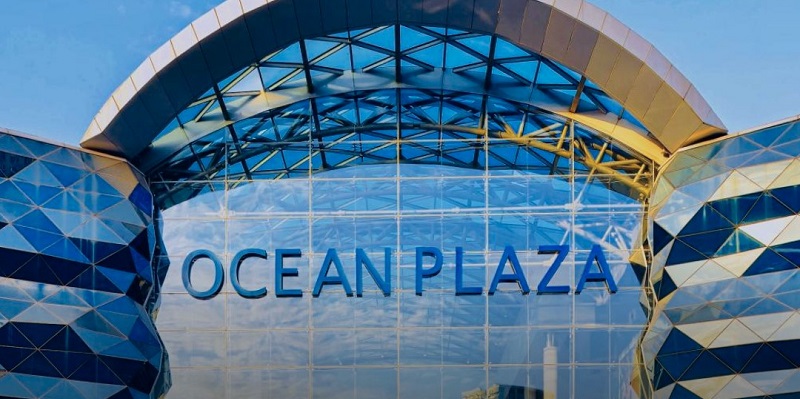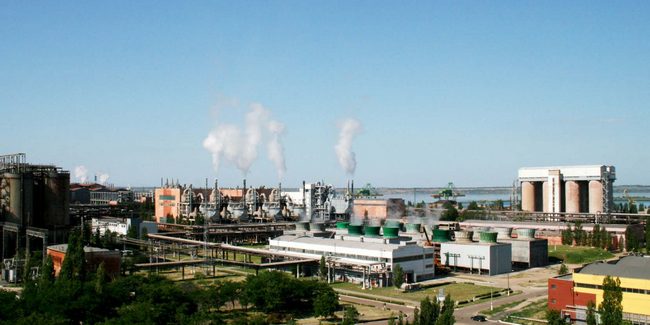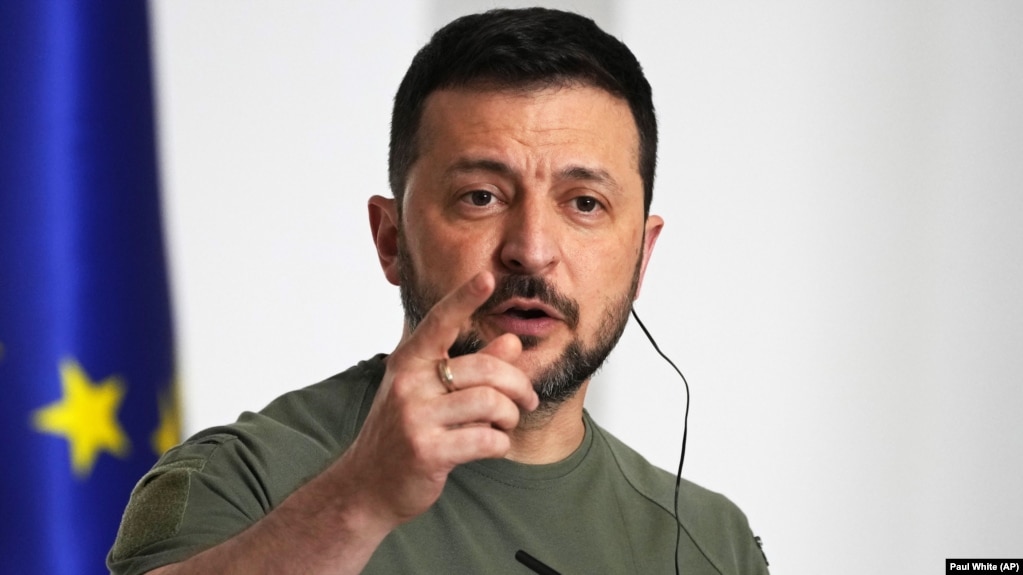37% Write-off or default.
Where is the burden of public debt leading Ukraine?

On June 17, the London Stock Exchange reported that the Ministry of Finance of Ukraine had failed in its attempt to negotiate with creditors to write off 25% to 60% of its government bond debt.
- The Ministry of Finance offered private creditors two options for restructuring Eurobonds. But it failed to reach an agreement with them.
- For developing countries, the limit of the negative impact of public debt on the economy is 65-70% of GDP.
- In Ukraine, this ratio has already exceeded 85%.
At the end of May, the information on Ukraine's public and publicly guaranteed debt, as is customary on a monthly basis, did not appear on the Ministry of Finance's website.
- According to the database of the Ukrainian parliament, Zelenskiy signed the law on July 31. After Russia launched its ongoing invasion of Ukraine in February 2022,
- The adoption of the law allowing Kyiv to postpone payments means that Ukraine will enter a short-term debt default that will last until private bondholders agree to postpone Ukraine's debt payments until 2027.
- That option has been supported by foreign governments.
- Such a deal would have less of an impact on Ukraine's long-term borrowing than if no agreement is reached.
---------------------------------------------------------------------------------------------------
In response to LIGA.net's inquiry about the national debt, the threats it poses, and options for getting out of it, the Ministry of Finance replied that there is currently an embargo on any communication from lawyers on this issue. Until a certain decision on restructuring is made.
In early June SERGII MARCHENKO - MINISTER OF FINANCE,
Public debt is the total amount of debt obligations of the state to repay received and outstanding loans.
Since the beginning of Russia's full-scale invasion of its territory, Ukraine has been plunging into debt quite seriously. At the end of 2021, Ukraine's public and guaranteed debt amounted to $97.96 billion. By the end of 2022, the amount exceeded $111 billion, and in 2023, more than $145 billion.
Currently, the country's expenditures far exceed its revenues. Each month, this is approximately $350 million more to the total amount of public and guaranteed public debt.
In addition, Ukraine's government loans are not used to develop the economy, such as building factories, infrastructure, and so on, but to continue military operations.
"Moreover, the tax base (citizens and businesses), the main source of government revenue, will shrink because of the war. The longer the fighting goes on, the worse the state finances are," says Natalia Boyko.
In the pre-war period, the average ratio of public debt to GDP in Ukraine was about 46%. In 2022, the ratio was 78.4%. At the end of last year, the ratio was 84.4%.
- If it is exceeded, economic growth loses two percentage points per year.
- If the ratio rises above 77-80%, the country faces serious economic difficulties.
- Above 90%, the GDP growth rate is halved.
- Then it becomes almost impossible to finance the national debt.
"With this approach, the value of 84.4% in 2023 in Ukraine indicates a rapid approach to a debt crisis. This is an increase of six percentage points over the year. If this continues, it will exceed 90% by the end of 2024. This is almost the pre-crisis levels of Greece. If the global economy experiences a recession in 2024-2025, the Greek scenario will become inevitable for Ukraine," Natalia Boyko argues.
Greece has long lived with a public debt-to-GDP ratio of about 100%. When the global crisis of 2008-2009 hit, the Greek government simply did not have the funds to finance the state. And no one wanted to borrow at a reasonable rate because of the high risks of default.
In 2010-2015, Greece applied to the EU for three aid packages. The country had to go through a very difficult period. At the same time, the value of public debt to GDP never returned to the pre-crisis level. In 2023, it amounted to 161%.
The fact that the increase in public debt comes from an external source is also destructive for the Ukrainian economy. Currently, 71.52% of the total public debt is external borrowing. On the other hand, in the current situation, Ukraine has no choice.
However, external borrowing postpones negative economic consequences for the future.
While the government does not have to expand the money supply to finance expenditures, devalue the national currency, cut wages, inflate inflation, etc., it may have to do so in the future if the external public debt is not waived. It could be a heavy burden even for future generations.
On June 1, the Ministry of Finance forecasted the amount of future public debt payments until 2050 with a detailed annual schedule. In 2024, Ukraine will have to pay UAH 1.02 trillion ($25.2 billion) in public debt repayments.
The state budget revenues for 2024 are planned at UAH 1.8 trillion ($44.4 billion).
In 2025 – UAH 889 billion ($21.9 billion). In 2026 – UAH 635 billion ($15.7 billion). In 2027 – UAH 549 billion ($13.5 billion). In 2028 – UAH 459 billion ($11.3 billion), in 2029 – UAH 432 billion ($10.7 billion), in 2030 – UAH 411 billion ($10.1 billion).
For the period of 2031-2049, UAH 4.086 trillion ($100.8 billion) is allocated. The smallest amount is for 2049 at UAH 87.61 billion ($2.2 billion).
- However, if we compare this forecast with the one published by the Ministry of Finance on May 1, we see that the new forecast shows an increase in the amount to be paid. Back then, the amount of payments projected by the Ministry was about UAH 870 billion ($21.5 billion) in 2025. In 2026 – 621 billion ($15.3 billion). In 2027 – UAH 536 billion ($13.2 billion). In 2028 – 457 billion ($11.3 billion). In 2029 – UAH 430 billion ($10.6 billion).
Obviously, this is due to the depreciation of the hryvnia. On the last day of April, the official hryvnia exchange rate set by the NBU was 39.6688 UAH/USD. On the last day of May, it was 40.4832 UAH/USD.
- The amount of state and state-guaranteed debt is calculated in monetary terms as the outstanding nominal value of debt obligations in the currency of the loan.
- The state and state-guaranteed debt is calculated in hryvnias and dollars at the NBU exchange rate as of the last day of the reporting period.
- The structural shortage of foreign currency is caused by the country's high trade deficit. Meanwhile, foreign debts must be repaid in dollars and euros.
"In the end, it’s a spiral. Due to the constant weakening of the hryvnia, the amount of public debt is growing.
In order to avoid a negative scenario, Natalia Boyko believes that two conditions must be met.
There are many options for such "forgiveness".
-----------------------------------------------------------------------------------------------------------------------------
The State Main Fund mentioned the reasons for the sale of the Demurin GOK separately from the OGHC
The chairman of the Vitaly Koval State Property Fund explained why Demurin Mining and Enrichment Plant LLC was not put up for privatization in one lot with the JSC "United Mining and Chemical Company".
About this Blacksmith told in an interview with LIGA.net.
Interview
How to turn liabilities into assets.
The Great Privatization is resumed in September.
Vladimir Fomichov
LIGA.net correspondent, Business section
How to turn liabilities into assets. Chairman of the SPF on readiness for the Great Privatization
In autumn, the Great Privatization is resumed. For the last time in 2021, the State Main Fund (FDMU) was able to sell the Bolshevik plant in Kyiv. In the fall, the Foundation planned to sell the Joint Mining and Chemical Company (OGHC), which consists of two titanium plants. This may be the second case in the history of Ukraine, after Kryvorizhstal, when a large industrial enterprise will be sold at an open auction. And for the first time – when it will be done on the Prozorro platform. Sales.
Read us in Telegram: headline news in short
LIGA.net spoke with the chairman of the State Fund Vitaly Koval about the state of Ukrainian large enterprises on the eve of auctions for their privatization.
The Great Privatization starts in September, the United Mining and Chemical Company (OGHC) and the Ukraine Hotel are on sale. What following objects do you plan to put up for sale within the framework of the Great Privatization?
This year we plan to put the first five objects on the Great Privatization. In addition to the already announced online auctions for the privatization of the hotel "Ukraine" and OGHC, in the fall we plan to put up for sale the plant "Aerok". The State Main Fund completed the preparation of this object for the auction, setting a starting price of more than UAH 965 million. The Government must now approve this proposal and the privatization conditions.
In addition, preparations are underway for the Great Privatization of two more nationalized assets: the Demurian Mining and Enrichment Plant and the majority stake in Kyiv's Ocean Plaza.
Did you make any predictions about object sales? What profit do you plan to get from the sale of Great Privatization facilities? Could it be much more than the starting price?
At the Great Privatization auctions, we do not expect the same rapid price increase as at the Small Privatization auctions. But competition will certainly increase the value of assets. This year, for the first time, the Great Privatization will take place on the Prozorro platform. Sales, which guarantees full openness and transparency of the process. And will expand the range of potential investors.
It is important to understand that the goal of the Great Privatization – is not just to sell state assets, but to attract investment that will promote economic development and job creation. Each such enterprise has the potential to develop entire industries and regions, provide employment and increase the well-being of Ukrainians.
Privatization allows to attract the private investment needed to strengthen the state's internal reserves and support the Armed Forces of Ukraine, which is especially important in the context of the war.
Is small privatization actively under way in Ukraine? How do you assess its holding in 2024? How many objects have already been sold and how much money to get to the budget?
We have very positive results from Little Privatization this year. As of mid-August, the overall economic effect of the auctions reached almost UAH 3.14 billion, including sales revenue, VAT and liabilities of new owners to repay debts of state-owned enterprises. This indicates a significant contribution of Small Privatization to the economy and the state budget.
Investor activity is confirmed by high competition in bidding: usually more than 5 participants take part in auctions. Due to this, the value of assets at auctions increases by an average of 2.6 times the starting price. And it's quiet, because today is not the time to increase losses. Today it is time to turn state "liabilities" into "assets", reload the economy and replenish the state budget, from which the Defense Forces of Ukraine are financed.
For example, the FDMU recently had a successful one since the beginning of the full-scale invasion auction in Kharkiv, where 34 participants took part in the auction. The historic building with a "degree" on Sumy Street was sold for UAH 60 million, which is 71.51 times the starting price. The winner of – company "Gamma" (belongs to the owners of the network of pharmacies "911", the family Anush Danielyan. – Ed.) together with VAT will pay 72 million hryvnias to the state budget.
One of the most anticipated auctions is the auction for the sale of OGHC, which broke down many times in 2021. In what condition is the plant now and most importantly, what is its reputation among investors?
OGHC is now in a stable state, and production and exports continue. A positive signal is that the first half of 2024, the plant completed with a net profit. We are actively working on preparations for privatization together with the international adviser of BDO Corporate Finance LLC, and they confirm the interest of investors and the high chances of a successful auction.
Are there companies that are interested in him? What countries are they from?
We have set strict restrictions on the participation of companies from the aggressor country, so Russian or state-related companies will not become new owners of the company. At the same time, we are seeing significant interest from potential investors from around the world, including the United States and even Australia.

Do I understand that the Demurin GOK is sold separately from OGHC? What prevented the Demurinka from joining the OGHC?
The decision to sell the Demurin GOK separately from the OGHC was made for several reasons.
First, the OGHC is already fully prepared for privatization, and the accession of the Demurin GOK would lead to a delay in the auction and a loss of valuable time.
Second, after consulting with potential investors, we saw that there was no need to pool the two assets. Investors interested in creating a single complex will be able to purchase them separately at open auctions.
In addition, there is a financial reason for a separate sale. Funds from the sale of OGHC will be directed to the state budget, while funds received from the sale of the Demurin GOK will go to the Fund for the Elimination of the Consequences of Armed Aggression. This will allow more efficient use of the received funds and provide their target for the restoration of the country.
Both Demurinka and OGHC are located near the battle line. The same applies to enterprises in the Zaporizhia region. Acquisition of these enterprises for investors carries certain risks. What steps is the state taking to insure military risks? What compensation can investors receive if something happens to their businesses?
We are actively working on the introduction of military insurance for privatization facilities. The main task – is to receive support from MIGA (World Bank International Investment Guarantee Agency).
Realizing the importance of comprehensive investment protection, we also appeal to international insurance companies to expand export insurance instruments by involving military risk coverage.
We call on foreign businesses to show interest in military risk insurance in Ukraine by addressing their insurance agencies with appropriate inquiries. This will help demonstrate to international insurers such as the Czech EGAP, the Japanese JICA, the export credit agencies of Germany (Euler Hermes), France (Bpifrance Assurance Export), Italy (SACE), the United Kingdom (UK Export Finance) and Sweden (EKN). ) there is a real demand for such services and will help intensify their work in Ukraine.
Many are concerned about the situation with Ocean Plaza. What's going on around the credit that's there? When can you expect an auction to sell a mall?
We act clearly within the law. The issue of the mall's debt is currently in court. Once the court has made a final decision, it will be determined whether or not to sell Ocean Plaza along with its debt obligations. And the auction date will be set.
And credit – is the only problem that is in Ocean Plaza?
From a technical point of view, Ocean Plaza is ready for privatization. We did all the necessary preparatory work.

According to the Law on Companies, a minority owner has the right to first buy a share of the enterprise if the other owner wants to sell it. Can Andriy Ivanov's UDP exercise this right? Did they show interest in buying a mall?
In the case of public bidding, such as an auction, the priority right to redemption does not apply. UDP has the opportunity to participate in the auction on equal terms with other participants.
And in general, UDP is interested in acquiring a state stake?
So far, UDP has not officially expressed a desire to participate in the auction, but we maintain a constant dialogue with them as shareholders.
It is clear that they are interested in determining the further fate of Ocean Plaza and understanding who they will have to work with in the future.
Currently, the complex operates and generates revenue. Assign a minimum, as shareholders, UDP performed.
The mayor of Yuzhny, Volodymyr Nowatsky, said in an interview with local media that there were opportunities to resume the work of the Odessa port plant (OPZ). Tell me, is this true? Could this be a resumption of work on the main profile? If so, who will supply gas to the company?
The State Main Fund owns 99.65% of the shares of the OPP. We have provided modern corporate governance mechanisms by creating a supervisory board and board at the enterprise, in accordance with current legislation. And they are responsible for organizing the activities of the enterprise. In particular, for the resumption of OPP and gas purchases.
What is happening with Centrenergo now? In what state are the TPPs that the Russians hit? Are they planned to be restored?
The situation with Centrenergo is similar. All operational issues, including the assessment of the state of TPPs after the shelling and plans for their restoration, are within the competence of the company's management.
Do you think it makes sense to hold some auctions under the Dutch system, given the state of the enterprises?
It is worth looking at it from the investor. For example, take the Zaporizhzhya Aluminum Plant (ZalK), where there are more than 6 billion debts. I don't think the price of 75 or 120 million will be significant for a potential buyer if the debts are an order of magnitude higher.
What do you think a potential investor can buy a ZalK for? Is it possible to resume aluminum production there? Where can there be raw materials for such production?
Zalk is certainly of interest to potential investors. Especially as a brownfield site with advanced infrastructure. This opens up opportunities for the creation of new industries, which will contribute to the economic development of the region.
The resumption of aluminum production, while requiring significant investment, is also quite real. The availability of protection zones, access infrastructure and infrastructure for the supply of electricity creates favorable conditions for this. A key success factor will be the involvement of a pro-Ukrainian investor willing to invest and efforts in the revival of the enterprise.
It is clear that a stable raw material base is needed to fully resume aluminum production. This involves the creation of vertically integrated supply chains, including the resumption of the Nikolaev Alumina Plant (MGZ) and the supply of bauxite from Ukrainian mines.
Does the Nikolaev alumina plant itself now operate?
The nationalized plant is managed by the State Property Fund. We maintain his working condition. Its activities are now suspended due to the blocking of Nikolaev's seaports and the risks of shelling. These circumstances make it impossible for it to function properly now.

In what state is the implementation of the project now "Land Bank of Ukraine"?
Its implementation at the finish line. Necessary legislative changes have already been made to the land, budget and tax codes. The land of 58 enterprises was transferred to the SOE "Agricultural Investment Fund", transformed into LLC "State Land Bank", 100% owned by the state. We are now at the stage of concluding land lease agreements.
On August 30, we plan to announce the first auctions for the lease of state agricultural land. They will take place in late September on the Prozorro. Sales platform. Every willing farmer or veteran, small entrepreneur or large agricultural company can participate. Let me remind you that for 14 years you can rent land for growing annual plantations, for 25 years – for growing perennial plantations.
- First, the OGHC is already fully prepared for privatization, and the accession of the Demurin GOK would lead to a delay in the auction and a loss of valuable time.
- "Second, after consulting with potential investors, we saw that there was no need to combine the two assets. Investors interested in creating a single complex will be able to purchase them separately at open auctions, – Koval explained.
In addition, according to the head of the SPF, there is a financial reason for a separate sale.
"The funds from the sale of OGHC will be sent to the state budget, while the funds received from the sale of the Demurin GOK will go to the Fund for the Elimination of the Consequences of Armed Aggression.
The company is located in the Vasilkiv district of the Dnipropetrovsk region, develops the Vovchanske titano-zircon deposit with reserves of 5 million tons of raw materials for onboard content of heavy minerals 9%.
Let's remind:
FDMU announced privatization auction on "OGHC". An auction of its sale is planned on October 9, 2024.
--------------------------------------------------------------------------------------------------------------------
.png)



.gif)




No comments:
Post a Comment